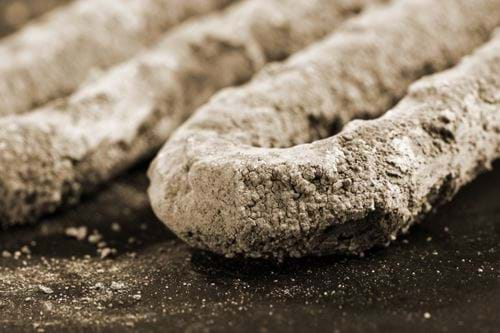Day 201: Chemical engineering meets geology

14th December 2014
Author: Geoff Maitland, IChemE President 2014–2015.
I'm sure you're familiar with stalagmites and stalactites - those spiky, rocky formations that grow up from the ground and drop down from the roof of caves.
Geologists have known for a while how these form and have established mathematical models for their formation.
Interestingly, stalagmite formation is an issue in nuclear processing plants industry and researchers have used some of the knowledge from geologists to create a versatile model to predict how these stalagmite-like structures form.
The main point of the research is to is to reduce the number of potentially harmful manual inspections of nuclear waste containers.
Within the nuclear industry, hazardous salt solutions can arise within industrial containment vessels. The salt solution precipitates out, forming structures with strange morphologies that bear a resemblance to stalagmites.

If left unchecked, they could build up and cause a problem in the nuclear containment chamber. Currently, these containment chambers are checked regularly to prevent this from happening.
The research has been led by Dr Mike Dawson from the School of Chemical and Process Engineering at the University of Leeds, who started the research during his PhD studies.
Mike says: “It took many months of intensive research to develop the model. The big test came when we tested the model against real data from the National Nuclear Laboratory.
“Our model stood up to the test. For the first time it was possible to predict the morphology of these complex crystallising flows reliably.”
The new model also has wider application to other industrial and domestic situations where a salt solution precipitates out and causes problems, such as forecasting the precise shape and location of build-up in pipes or heat exchangers – or even how lime scale will collect within a kettle.
Dr Duncan Borman, from the School of Civil Engineering at the University of Leeds, and a co-author of the study, said: "This breakthrough provides a new tool for the National Nuclear Laboratory and Sellafield Ltd, with the potential to save both money and continue to ensure they are at the forefront of world-leading safety technology.
“The processes underlying the build up of lime scale in a kettle are remarkably similar: the flow of a liquid containing a dissolved mineral – in this case calcium carbonate from hard water – over a surface of changing temperature, can result in solids precipitating out and leaving the build up of solid material behind."
Well done too to the sponsors of Mike's research, which was funded by a CASE PhD studentship offered by the National Nuclear Laboratory, Sellafield Ltd and the Engineering and Physical Sciences Research Council (EPSRC).
*************************************************************************************************
Mike's research paper: Moving boundary models for the growth of crystalline deposits from undetected leakages of industrial process liquors is published in the journal Computers & Chemical Engineering.
ChemEng365 blog
Geoff Maitland launched this blog during his IChemE presidency in 2014. ChemEng365 features 365 chemical engineering successes and achievements throughout his year-long presidency.